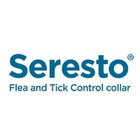
Fleas and ticks are more than just a nuisance—they pose serious health risks to dogs and cats. From skin irritations to potentially fatal diseases, these parasites can quickly become a major problem if not handled proactively. As a pet owner, understanding how to protect your furry companion from fleas and ticks is essential to their overall health and happiness.
This guide will cover everything you need to know about flea and tick prevention, including identifying an infestation, effective treatment options, and year-round prevention strategies.
Why Flea and Tick Prevention Is Essential
Fleas and ticks are not just seasonal pests—they can strike anytime, especially in warm and humid climates. Fleas can cause intense itching, allergic reactions, and even tapeworm infections in pets. Ticks, on the other hand, are known carriers of dangerous diseases such as:
These diseases can affect animals and humans, making prevention a priority for your household.
How to Spot Fleas and Ticks on Your Pet
Identifying the problem early makes treatment easier and more effective. Here are common signs your dog or cat might have fleas or ticks:
- Constant scratching, licking, or biting the skin
- Hair loss or scabs, especially around the neck and tail
- Visible fleas or flea dirt (tiny black specks) in your pet’s fur
- Ticks attach to the skin, often around the ears, paws, or under the collar
Regular grooming and checking your pet’s fur are key to early detection.
Top Flea and Tick Treatment Options
Choosing the proper treatment depends on your pet’s age, size, and health condition. Below are the most effective options:
1. Topical Treatments
Applied directly to the pet’s skin, these spot-on treatments usually offer protection for up to 30 days. Popular products include:
- Revolution – Contains selamectin, effective against fleas, ticks, heartworms, and ear mites
- Advantage II – Combines imidacloprid and pyriproxyfen to kill fleas at all life stages
2. Oral Medications
Chewable tablets like Simparica and NexGard work from the inside out, killing fleas and ticks through your pet’s bloodstream. These are easy to administer and long-lasting.
3. Flea Collars
Collars such as Seresto offer up to 8 months of protection and are ideal for pets that don’t tolerate topical or oral treatments.
4. Shampoos and Sprays
Flea shampoos and sprays provide instant relief but are best used with other methods for long-term control.
Natural Prevention and Home Care
Besides medications, you can take simple steps to keep your home and environment flea-free:
- Vacuum your home regularly, especially carpets and pet bedding
- Wash your cat's and dog's bedding weekly in hot water
- Keep your yard trimmed to reduce tick habitat
- Use vet-approved natural repellents like essential oil sprays with eucalyptus or cedarwood (not all are safe for pets—always check with your vet first)
Year-Round Prevention Is Key
A common mistake pet owners make is halting flea and tick treatments during cooler seasons. However, fleas can thrive indoors throughout the year, and ticks remain active in temperatures as low as 4°C (39°F). To ensure continuous protection, vets advise keeping your pet on preventive care year-round—even if they rarely go outside.
Consult Your Veterinarian
Before starting any flea or tick treatment, always consult your vet. Based on your pet's needs, a veterinarian can recommend the most effective and safest option.
Final Thoughts
Tick and flea prevention is critical to your pet’s overall care routine. With the right approach, you can protect your dog or cat from harmful parasites and ensure they live a comfortable, healthy life. Whether you prefer oral treatments, spot-ons, or collars, staying consistent with protection will make all the difference.






